Now witness the firepower of this fully ARMED and OPERATIONAL battle station... I mean, jack-o-lantern!
Not my photo or my pumpkin: originally © 2006 by Fantasy Pumpkins (see their website, via Wired).
Tweet
Now witness the firepower of this fully ARMED and OPERATIONAL battle station... I mean, jack-o-lantern!
Not my photo or my pumpkin: originally © 2006 by Fantasy Pumpkins (see their website, via Wired).
I've lived in three different houses in my life. Yes, just three. In 1969 my parents brought me home from St. Paul's Hospital to a 1930s-era house in East Vancouver, near the Pacific National Exhibition grounds. My mother's parents lived there too. In 1971 we moved to a three-year-old duplex in Burnaby, with those same grandparents next door. I grew up on the west side of that duplex, staying even when my mom and dad moved to Toronto (temporarily, it turned out) in '87, and sharing my side with three roommates, Alistair, Andrew, and Sebastien.
In 1991 my parents moved back, so it was time for me to ship out. Sebastien, our friend Tara, and I rented a house only a few minutes away, also in Burnaby, on Victory Street. We stayed a couple of years, but by 1993 my grandparents had both died in their late 80s, and my folks invited the three of us to rent out that half of the old place. We agreed.
Tara moved out a little later, and by 1995 I was engaged to Air, so she moved in and we edged Sebastien out the door. He had been my housemate for eight years in total. Air and I (and now our kids, and our dog) have been here ever since. I've lived on one side or the other of this duplex for 37 of my 41 years, and my daughters attend the same elementary school I did in the '70s.
Those other two houses? The East Van abode stayed in the family: my mom's sister and her husband have lived there for over 35 years, and one of their daughters (my cousin Tarya) shares the basement suite with her husband and their cat. We visit often, and it's where we all eat dinner each Christmas Eve.
The Victory Street house is different. I've passed by fairly often over the years, and the place saw a new paint job and what was probably a succession of several renters. But a few months ago, it was gone, replaced by the framing for a new townhouse complex. It had been an odd structure, probably of 1930s vintage like my aunt and uncle's place, but sort of half-renovated, with a new large master bedroom and extended—but awkwardly empty—kitchen. It used oil heat, had one windowless bathroom, and featured a huge yard often infiltrated by raccoons (who once mauled our cat Guildenstern and left him cowering in the woodpile, until we rescued him to take him to the vet).
If you opened the window sash in the top floor hallway, it was possible to crawl out onto the sloped shingle roof, and look far to the south, across the Fraser River and as far as the San Juan Islands in the United States. In the otherwise unfinished concrete basement, there was a small wood-panelled room where my band used to practice and write songs. One year while we lived there, I had a job at Simon Fraser University on Burnaby Mountain, to the northeast, and classes at the University of British Columbia, far to the west in Vancouver. I rode my bicycle to both, and was in the best shape of my life.
It was only my home for a couple of years in my early 20s, but Victory Street generated many memories. I finally felt like an adult there: it's the only home I've had with no real-estate connection to the rest of my family. Now it's been bulldozed, so the memories, and a few photos hiding in a box somewhere, are all that's left. Whoever moves into the new townhouses can make some new memories instead.
 My dad has been an amateur astronomer since his childhood. The way my daughters have grown up around computers and cameras and musical instruments, I grew up around telescopes. And while most astronomical observing is of objects in the night sky, you can see some pretty fascinating things during the day too—especially if you want to examine our nearest star, the Sun.
My dad has been an amateur astronomer since his childhood. The way my daughters have grown up around computers and cameras and musical instruments, I grew up around telescopes. And while most astronomical observing is of objects in the night sky, you can see some pretty fascinating things during the day too—especially if you want to examine our nearest star, the Sun.
To that end, a few months ago my dad ordered an obscure piece of gear, something I'd never heard of before: a custom-built personal solar telescope with a built-in hydrogen-alpha light filter. It just arrived, and he had a chance to try it today. Compared to his other optical equipment, it looks small and unassuming, almost like a large spotting 'scope. But there's a lot more going on inside.
I've been looking through his traditional telescopes with regular solar filters on them for decades. What you see there is a yellow-orange disc. Sunspots are easy to identify, but much of the rest of the Sun's surface is pretty nondescript in that view, much like what you can see through clouds or smoky air.
What I saw when I peeked through his new solar telescope, though, was astonishing. Instead of yellowish-orange, the Sun was deep red. Sunspots, rather than simple blots, had complex edges. I could see the granules that make up the solar surface, and at the Sun's edge, numerous spouting, filigreed prominences jetting off into space. Over time, those prominences changed shape, the way clouds morph in the sky. And this was not some digitally enhanced space-telescope image: I was looking at this stuff with my own eye, from the back porch.
The reason the solar telescope provides such a different view through the eyepiece is that hydrogen-alpha filter. While a traditional solar filter acts like a really opaque set of sunglasses, drastically reducing the intensity of all visible wavelengths of light so you can look at the Sun through a telescope without frying your eyeballs in their sockets, an H-alpha filter does so extremely selectively. Using some clever optical tricks, it lets through only a tiny range of colours, in a narrow band of red wavelengths surrounding 656 nanometres.
Those particular wavelengths are important because the Sun is a giant roiling ball of nuclear fusion, turning hydrogen into helium, and the 656 nm wavelength (more precisely, 6562.8 Ångstroms) is the primary spectral emission wavelength of hydrogen. That means that a lot of the interesting stuff that the Sun is doing (especially in its chromosphere) is visible at that wavelength, but normally it's hard to see because it's overwhelmed by the other light blasting out at all the other wavelengths, in the visible spectrum and beyond.
So what I saw through my father's small H-alpha solar telescope was a more active, detailed, seething star than I'd ever witnessed with my own eyes. The Sun is, of course, the source of all the non-geothermal energy here on Earth, the thing that keeps us and everything else alive. Watching it seethe in real time gave me new respect for that.
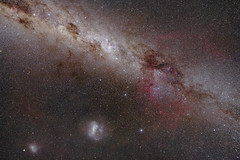 If you like the sitcom The Big Bang Theory, you might wonder how much of the science referred to on the show is realistic. David Saltzberg is the program's science advisor, and he has a blog about that very subject, called The Big Blog Theory.
If you like the sitcom The Big Bang Theory, you might wonder how much of the science referred to on the show is realistic. David Saltzberg is the program's science advisor, and he has a blog about that very subject, called The Big Blog Theory.
Saltzberg consulted Phil Plait, the Bad Astronomer, about the latest post, listing the nearest stars to our solar system. Since I met Phil a couple of summers ago, I guess I'm only a couple of degrees of separation from the cast of the show (and the MythBusters too!).
This is where my wife Air and are spending the weekend. This evening we're off to the Grotto Spa. A huge thank-you to my cousin Tarya and her husband T.J. for sending us on this jaunt across the Salish Sea, as a thank-you gift for taking photos at their wedding a few weeks ago.
I don't believe in karma, but sometimes what goes around does come around.
P.S. Portions at the resort restaurant are ridiculously large. I might have been able to finish my delicious steak last night if I hadn't ordered what turned out to be a huge (and also delicious) Caesar salad first. You've been warned.
Sex columnist, speaker, and podcaster Dan Savage has been on a tear recently with his It Gets Better campaign. Here's the gist: after recent high-profile media coverage of yet more suicides by gay teenagers bullied at school, Savage encouraged older gays, lesbians, bisexuals, and transgender people—as well as those who support them—to post videos about how much better their lives became as they grew up. In other words, he wanted to emphasize that the despair of being young and bullied for having a different sexual orientation need not last forever.
As someone who was raised and schooled as a Catholic, Savage heaps particular scorn on churches and other religious organizations (especially in the U.S.A.) for their promotion of bigotry towards homosexuals like him, both within their congregations and in the more general political and social sphere. He minces no words:
...many of your children—having listened to Mom and Dad talk about how gay marriage is a threat to family and how gay sex makes their magic sky friend Jesus cry—feel justified in physically abusing the LGBT children they encounter in their schools.
And he doesn't go easy on more liberal Christians either:
I'm sick of tolerant, accepting Christians whispering to me that "we're not all like [anti-gay fundamentalists]." If you want to change the growing perception that "good Christian" means "anti-gay"—a perception that is leading many people to stop identifying themselves as Christian because they don't want to be lumped in with the haters—stop whispering to me and start screaming at them.
Dan articulates very well what I find frustrating (and doubtless gay people find infuriating) about the way our society talks about and deals with sexual orientation. Somehow it is still acceptable to be bigoted against LGBT people, when other bigotries (about race, class, gender) no longer are—and even to feel offended when other people call you out for it.
That acceptance has real consequences:
You don't have to explicitly "encourage [your] children to mock, hurt, or intimidate" queer kids. Your encouragement—along with your hatred and fear—is implicit. It's here, it's clear, and we're seeing the fruits of it: dead children.
Yes, LGBT issues being mainstream is a pretty new thing. For instance, despite Vancouver's progressive and liberal bent, when I was a teenager in the '80s, homosexuality was still pretty taboo. None of my high-school classmates was out, though several of them are gay. I doubt any of us imagined that same-sex marriage would be legal in Canada before our 20-year class reunion.
But social change should be rapid. Once we as a society realize that something is wrong, we shouldn't delay in correcting it. Mollifying bigots and bullies is not an excuse to slow down, especially if kids die when we do.
Two thoughts for the Mad Men fans out there about tonight's season finale:
Yes, count me in with the people who were hoping the marriage proposal was a dream sequence. But it remains true that you can't predict where this show is going, even week to week.
Given how long it's likely to be until season 5 starts (next summer), I hope I'm still alive to see it!
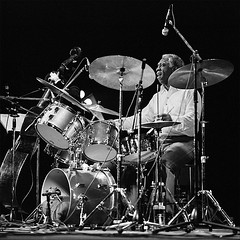 My dad loaned me his new CD copy of Art Blakey's Drum Suite album, which I wrote about the other day, so I've had a chance to listen to it in full for the first time in 25 or 30 years. (His old LP record was so scratchy he had to replace it.) It showed me how selective memory can be.
My dad loaned me his new CD copy of Art Blakey's Drum Suite album, which I wrote about the other day, so I've had a chance to listen to it in full for the first time in 25 or 30 years. (His old LP record was so scratchy he had to replace it.) It showed me how selective memory can be.
My deep childhood recollections are entirely of the first three songs—side A of the LP—"The Sacrifice," "Cubano Chant," and "Oscalypso," which are all pulsating slabs of delicious Afro-Cuban jazz rhythms. I must have heard side B before, but none of it sounded familiar. Even of the three initial tracks, there are big chunks I don't remember at all, like the piano parts in "The Sacrifice." But with other bits, like the Swahili gang vocals at the beginning, or the bizarre, semi-atonal cello strumming in "Oscalypso," I could sing or hum along seamlessly.
UPDATE: Reading the liner notes, I discovered that the original LP version of "The Sacrifice" had the piano and bass solos edited out for length, so I remembered correctly that they hadn't been there. Or, uh, when I didn't remember the piano, that was correct. Or something like that. Anyway, the CD re-release restores the full recording, so the piano and bass solos were new to me.
In keeping with my Beatles discussion recently too, there's a possibly-apocryphal story that John Lennon derided jazz, saying that it "never goes anywhere, never does anything." He had something of a point if you listen to side B of Drum Suite, which is full of more typical late-'50s swinging bebop improvisation, with noodly horns and tubby bass solos and the whole shebang. It's very good if you appreciate the genre, but I could see why a teenage Lennon in Liverpool might have hated the style, because it's intellectual, complex, grownup music. If you're a bag of raging hormones, rock-n-roll like Elvis and Little Richard and Gene Vincent would deserve to kick it off the pop charts.
Lennon and his fellow Beatles, of course, made sure that happened: as far as I know, Louis Armstrong's version of "Hello, Dolly!" was the last unequivocally jazz Billboard #1 hit, in 1964, the year the Fab Four took over the charts in the name of rock.
But while it's also certainly jazz, the Afro-Cuban percussion ensemble on side A of Drum Suite has a different emphasis. It's driven neither by melodic improvisation nor by chords, but by the endlessly inventive, interlocking rhythms. Two drum kits, congas, bongos, shakers, cowbells, timpani, piano, cello, vocal shouts, and more. I've speculated that the sound of those three tracks subliminally influenced my decision to become a drummer 15 years or so after I first heard them. Either that, or I had some predisposition for rhythm even as a very young kid, which is why I wanted to hear those tracks over and over. Perhaps a bit of both.
In some ways, the story of twentieth century popular music is the story of melody being taken over by rhythm. In America, and then throughout the world, Western concepts of harmony and composition were permanently altered by the pulse of Africa and the Caribbean. Blues and ragtime became jazz, and filtered into R&B and rock-n-roll, then soul and funk, disco and reggae, then dance, hip-hop and electronica. As a result, the songs on today's pop charts have more in common with southern prison work songs from 100 years ago than with the polite popular ditties of the same era.
The dark, scary interval of the final vocal at the end of "The Sacrifice" draws on those same work-song traditions, and still gives me freaky shivers. Here, listen to the last 20 seconds (MP3 audio) to hear what I mean.
![]()

Photo: Hugo Infante/Government of Chile, October 14, 2010
I'm no cynic. Yesterday, as each of 33 trapped miners emerged from the Fenix rescue capsule, out of the dusty ground in the mountains of Chile, then hugged his wife or girlfriend or child or brother or other relative, I cried. Sometimes I wept openly in front of the TV, or in the car as I listened to the radio. These were men who could easily have been dead for months, but who are still alive, and healthy, and now back with the rest of us.
But so many people, from miners and rescuers and their families, to politicians and media correspondents, called it a miracle, and that bothered me. This rescue was no miracle. It was a remarkable, difficult, challenging, and happy human achievement. I posted on Twitter and Facebook that calling the rescue a miracle belittles the amazing human work done by the rescuers, the teams of engineers and others who planned and executed it, and the miners themselves.
There was a lot of praying and thanking God from the miners, their relatives, the politicians, workers and others onsite at the San José Mine. Which is fine—they are entitled to believe what they want, and to draw comfort and inspiration however they can—but no god dug that amazing rescue shaft.
Sadly, now representatives of different churches are trying to claim that their particular prayers were the ones that helped save the miners. Yet, or course, none are vying for their version of God to take the blame for the initial disaster in the mine two and half months ago—or for the deaths of dozens of other miners in Chile this year for whom there were no miracles. (UPDATE: For further context, in China, there were over 2600 mine deaths last year, and more than 1250 so far this year.)
Miracle does have a secular meaning, but from the President of Chile on down, in this context people seemed to be using its most direct definition: "godly intervention." Yet a real miracle would be if the miners had just been magically teleported to the surface when the collapse began, or if it hadn't happened in the first place. But people had to dig the rescue shaft, and that is the wonderful achievement.
I looked out my front windows yesterday and realized that what the rescue did was pull each man on a thin strand through a drill hole 2000 feet deep, like bringing them up from the very heart of one of the North Shore mountains to the top, on a wire:
Here's a visualization to scale of the distance (via J-Walk), which you can also see along the right edge of this blog entry.
Doing that took skill, talent, knowledge, ingenuity, determination, science, and meticulous planning. It was tremendous good luck (and at least some credit in mine safety design—however flawed—plus training and discipline) that the miners all survived the initial collapse back in August, and the 17 days before anyone was able to contact them. But from then on, the rescue effort was pure hard work.
However inspiring it is to some that people around the world were thinking of and praying for the miners while they remained trapped in their tiny, hot, humid rock chamber for months on end, it was not the abstract thoughts and prayers that pulled them out. It was the thinking and planning, drawing and building, drilling and feeding, testing and re-testing—it was the doing that brought them to the surface yesterday.
I celebrate that.
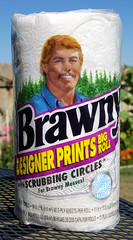 The latest episodes of my two favourite podcasts reinforce why I like them so much.
The latest episodes of my two favourite podcasts reinforce why I like them so much.
First, Planet Money #219 asks, would you rather live on $70,000 USD a year today (a middle-class living), or $70,000 USD a year in 1900 (when it would have made you stupefyingly rich)? My answer is easy: since I have both diabetes and cancer, I'll take now, since no matter how much money I had, in 1900 I'd be dead. Your answer might not be so obvious, though if you like air conditioning and the easy ability to travel and communicate, you'll probably make a similar choice.
My reason for liking episode #75 of Reasonable Doubts comes down to one quote: "Hinduism is like the Brawny Towel of religions—it can really soak up and absorb just about anything." (The episode is actually about Buddhism.)
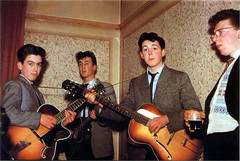 Saturday would have been John Lennon's 70th birthday (his son Sean turned 35 the same day). Lennon was shot dead in New York City a couple of months after his 40th birthday in 1980. As a lifelong Beatles fan, a musician who played a lot of his songs over the past couple of decades, and someone facing my own mortality—and despite all my health problems over the past few days—I've been listening to some of my favourite songs from the band.
Saturday would have been John Lennon's 70th birthday (his son Sean turned 35 the same day). Lennon was shot dead in New York City a couple of months after his 40th birthday in 1980. As a lifelong Beatles fan, a musician who played a lot of his songs over the past couple of decades, and someone facing my own mortality—and despite all my health problems over the past few days—I've been listening to some of my favourite songs from the band.
As I mentioned recently, that set included Revolver, as well as Rubber Soul, and the album (not EP) version of Magical Mystery Tour. What John Lennon songs do those discs include?
Of that incredible batch of songs, I think only "Run for Your Life" is a weak one (weak for the Beatles, anyway), and "Doctor Robert" is merely rather good. The rest are in varying parts genius, groundbreaking, soporific, anthemic, bizarre, sexy, psychedelic, touching, classic, and inspiring. Surprisingly, in my particular list there are no flat-out rockers like "Twist and Shout" or "Revolution." My favourite? Probably still "Strawberry Fields Forever," followed by "She Said She Said" and "I Am the Walrus." (Hmm, the druggy ones.)
However, in the full listen through, I rediscovered a Beatles favourite of mine that I hadn't heard in years, and didn't realize how much I missed: Paul McCartney's "Got to Get You Into My Life." In it, the Fab Four manage to out-Motown the horns-and-tambourine trademarks of Motown itself, with a song that Marvin Gaye or Stevie Wonder or the Supremes could easily have made a #1 hit. But for the Beatles it was only an album track (until a 1976 re-release that took it to Billboard #7).
Now, I'm not a famous or influential musician, but despite my perhaps bleak prospects, I've already lived longer (at 41) than many such entertainers (like Lennon) who accomplished quite a lot: Buddy Holly, Hendrix, Brian Jones of the Rolling Stones, Mozart, Mama Cass, John Coltrane, the Notorious B.I.G., Marc Bolan of T-Rex, Charlie Parker, Kirsty MacColl, Duane Allman, Jaco Pastorius, Sid Vicious, Jim Croce, Randy Rhoads, Keith Moon, Tim and Jeff Buckley, Michael Hutchence, Janis Joplin, Ian Curtis of Joy Division, Tommy Bolin, Tammi Terrell, Robert Johnson, Nick Drake, Bon Scott of AC/DC, Selena, John Bonham, Kurt Cobain, Charlie Christian, Karen Carpenter, Bob Marley, Jim Morrison, Tupac Shakur, Sam Cooke, Stevie Ray Vaughan, and three members of Lynyrd Skynyrd.
Honestly, I think I've lived a better life than many of them did. John Lennon, for all his success, rarely seemed genuinely happy, except perhaps near the end. I've been lucky to grow up my whole life in Vancouver, with good friends and family. I've never really worried about whether I'd have enough to eat, or a place to live, or interesting things to do. Yes, having metastatic cancer sucks big time, for all of us here. It's made the past few years hard, and things would be far, far better without it. I wish I could live longer than I probably will. But I have a wonderful wife and great relationships with my daughters.
Would John Lennon have envied my life? Likely not, but maybe. Maybe.
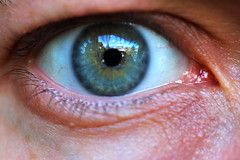 During my brief stay in hospital before the weekend, I had been afraid that my major diarrhea side effects from chemotherapy would kick in while I was there. They didn't, which was fortunate. They waited until last night.
During my brief stay in hospital before the weekend, I had been afraid that my major diarrhea side effects from chemotherapy would kick in while I was there. They didn't, which was fortunate. They waited until last night.
My medical team tweaked my last chemo treatment on October 4 to try reducing this particular side effect, but that made no difference. The pattern has become this: roughly a week after I first receive the chemo dosage, my body decides to purge everything out of my gastrointestinal tract. Yesterday, after a perfectly decent day limping around on my still-swollen leg, helping my kids with homework and school projects for next week, I headed down the hall about 7:45 p.m. for a routine trip to the bathroom, but then I couldn't leave.
Good thing the kids had TV and video games, as well as the initiative to make one of our beds and load the dishwasher. I didn't see them for awhile.
I was in the bathroom for four hours, on the toilet, lying on the floor in various positions to try to relieve gas pressure, in the shower with hot water pouring on my back to reduce cramps, and so on. I puked up my dinner as part of the process. My wife Air came home from an evening out and brought me a cold glass of water and a couple of tablets of Imodium to try to slow things down. I took them and then immediately barfed them up again—the first time in my life I've ever thrown up ice-cold vomit, which was weird.
Eventually, everything slowed down on its own, once there was basically nothing left in my guts to purge. Around midnight, I came to bed (only then noticing that yes, my left leg still hurts from the blood clot, but perhaps a bit less) and lay there shaking. I got some Imodium down, as well as some Tylenol for my entire lower abdomen, which by now was achy and sore. I had to pop back to the bathroom a few times during the next three or four hours as well, but I got sleep in between, especially after I took an Ativan to calm my by-now-jangly nerves.
Our dog Lucy, who sleeps between my wife and me on our bed, was repeatedly freaked out by the growling monster noises emerging from my belly under the covers. She almost barked at them once.
I slept till almost noon this morning, and I feel tremendously better. Tired, yes, but my insides feel much more normal. Even my leg, which I'd almost ignored through the ordeal, seems less swollen, though I'm still limping when I walk on it—so it improved while I was distracted. I ate some cereal—the first food to stay in my system for about 17 hours. I'm hoping to make it to a family Thanksgiving dinner this evening, though I'll probably be pretty subdued.
It's been quite a week:
It sucked, for me and for my family. It was hell and torture—as in, if I had to do this stuff for a long time, it might just drive me off the deep end into raving, pain-and-nausea–induced insanity. It was bad.
Right now my instinct is to postpone my next planned chemo, scheduled a week from today. I want to recover.
I've often written on my blog about how poorly the human brain intuitively understands probability. My very basic understanding from statistics courses (and a vague interest) is the reason I don't buy lottery tickets. Yes, your chances of winning a jackpot if you don't play are zero, but your chances of winning if you do play are so close to zero it makes no difference. I might do better wandering around town hoping to find a few million dollars lost in a bag on the street (which has happened, here in Vancouver).
People who know me are tired of my saying that if I ever do buy a lottery ticket, my numbers will be consecutive: 1, 2, 3, 4, 5, 6 for the Lotto 6/49, for example. Those are just as likely to be a winning combination as anything else. Here's proof: not just one, but four people in New South Wales, Australia just won a jackpot using the numbers 1 through 10 as their picks, getting more than $2 million Australian each.
I think it was my friend Karen who pointed out that choosing consecutive numbers (or any other set that might be easy to think of, or might have some meaning to people) isn't the smartest strategy. Why? Because, as for those Australians, it's more likely that several players will choose them, and that you'll have to split any winnings you do get. That's because, unlike the numbers that win, many numbers that players pick are non-random. Going with a random set of numbers (the same ones or different ones, whatever) each draw would bring the best likelihood—still trivially small—of keeping it all yourself, or splitting with fewer co-winners. Nevertheless, I'd take $2 million and the good story.
But if I have a few bucks to spend, I'll probably still get myself a burger.
Yesterday morning, I felt all recovered from this week's chemo, only to find my left leg mysteriously swollen. It also hurt to walk on. After the kids left for school, I saw my doctor, who immediately sent me to Vancouver Hospital for an urgent ultrasound.
It was good he did, because my swollen leg turned out to be the result of a nasty blood clot. So I'm in hospital for a few days and will continue taking blood thinners when I get out. Clots like this are a risk with my colorectal cancer and chemo, unfortunately.
Thanks for all the kind messages on Twitter and Facebook. So far hospital food is surprisingly decent (lunch was a tasty frittata with soup and an excellent little salad), I got a private room (even my own small washroom), and I'm feeling okay.
Right now I'm restricting visitors to family only, since I'm still pretty tired. But I'll keep you posted.
UPDATE: I'm home already, the same night. Once things got under control the hospital felt it safe for me to leave after dinner. I'm back taking daily Fragmin (dalteparin) injections—the same stuff I used to take (and should have kept taking, it seems!). And I'm still hobbling around while the swelling subsides. It's good to have a bath at home and go back to the big comfy bed. I missed my wife and kids and puppy, even in a short absence.
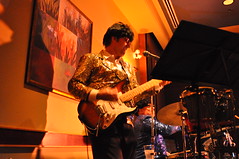 One year ago today, October 3, 2009, I played guitar and drums with my band out in Tsawwassen. I had a feeling (though I wasn't certain) that it might be the last proper gig I would ever play, and now, in retrospect, it seems that was indeed the case.
One year ago today, October 3, 2009, I played guitar and drums with my band out in Tsawwassen. I had a feeling (though I wasn't certain) that it might be the last proper gig I would ever play, and now, in retrospect, it seems that was indeed the case.
Whenever the possibility of a show has come up in the last year, my health hasn't been good enough, and that situation isn't improving as time goes on. I'm not well enough for the packing, transport, setup, sound check, playing, breaks, teardown, re-packing, and traveling home, even for simple local performances. Tremendously fun as it is, it's also physically and mentally exhausting. After that final show last year, I was wiped out for two days.
 So, I made money as a gigging musician for 20 years, and now it's over. And that's okay, because 20 years is nothing to sneeze at as a musical career. It's been my entire adult life, and half my life overall! (I haven't held any other job nearly that long.)
So, I made money as a gigging musician for 20 years, and now it's over. And that's okay, because 20 years is nothing to sneeze at as a musical career. It's been my entire adult life, and half my life overall! (I haven't held any other job nearly that long.)
A benefit now is I can now decide what musical gear is worth keeping and what I can give away to my family, friends, and colleagues, or sell:
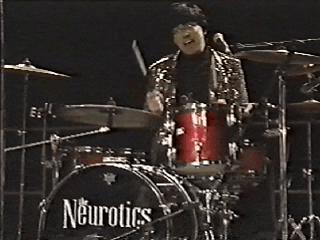 I don't plan to get rid of everything. My two daughters are quite musical, studying piano and voice and now playing in the school brass orchestra. (They've each had far more formal musical training than I ever did.) There's a decent chance they might want to put a band together in a few years, so it might be wise to have the minimum roster of gear available to do that. Plus, for now I still like noodling around and recording the occasional tune, in addition to co-hosting Inside Home Recording.
I don't plan to get rid of everything. My two daughters are quite musical, studying piano and voice and now playing in the school brass orchestra. (They've each had far more formal musical training than I ever did.) There's a decent chance they might want to put a band together in a few years, so it might be wise to have the minimum roster of gear available to do that. Plus, for now I still like noodling around and recording the occasional tune, in addition to co-hosting Inside Home Recording.
I've purged out old computer technology from that office/studio a couple of times in the past five years. This is the next obvious step.
I don't listen to as many podcasts as I used to, even though I am the co-host of a reasonably popular one, and also have an occasionally-updated largely musical one of my own. From 2005 through 2007 in particular, I devoured podcasts, listening in the morning while getting the kids ready for school, on the commute to and from work, sometimes at work, while driving in the car or shopping or waiting in line, while falling asleep at night, and even in hospital when I was recovering from surgery.
There are many reasons my listening habits have changed. Since I've been on medical leave for cancer treatment, I'm not commuting, and I'm also not often working on non-language right-brain stuff (such as editing images) that doesn't interfere with spoken-word podcasts. Now that I have an iPhone and an iPad, when I have time to kill either at home or out running errands, I'm more likely to fire up Twitter or a web browser or a game than to listen to a podcast.
And, because of my newfound cancer-driven appreciation for the little things in everyday life, when I go for a walk around the neighbourhood (often with the dog), I usually leave the earphones at home, and simply listen to the sounds around me.
So while I still have quite a few podcasts in my iTunes subscription list, I miss a lot of episodes and delete many of them unheard. There are two shows I never miss, though: National Public Radio's Planet Money, and the indie show Reasonable Doubts. (Though I don't catch every episode, I also listen to almost every release—ahem—of Savage Love, after a recommendation a couple of years ago from my wife, and CBC's Spark is a regular too.)
Here's why I find both Planet Money and Reasonable Doubts un-missable: They're about the right length and frequency—around 20 minutes several times a week for Planet Money, less than an hour every week or two for Reasonable Doubts—that I can stay caught up without being overwhelmed (a problem for Leo Laporte's ever-increasing and ever-lengthening stable of shows on his TWiT network).
Both of my favourite podcasts are well-structured and excellently produced, telling compelling stories in an interesting format. Most importantly, I learn a lot about subjects that previously didn't interest me much at all: business and religion.
Before Planet Money came along, I found most business journalism about as interesting as a fishing show, or the farm report that used to come on TV before cartoons in the early mornings when I was kid: in other words, so dull it was physically painful. But when the team that would later create the standalone Planet Money podcast produced the "Giant Pool of Money" episode for This American Life in 2008, I was hooked. A single show somehow managed to explain the global economic crisis of that year, and the American housing-market meltdown that triggered it, clearly and concisely, without dumbing the subject down.
Planet Money takes a similar approach to all sorts of topics in economics, global finance, and other business subjects that I'd never normally want to delve into. Yet it fascinates me every time. This week, for instance, I learned about how Brazil changed its currency to stave off runaway inflation in 1994. Yawn, right? Not when the show has a title like "How Four Drinking Buddies Saved Brazil."
Reasonable Doubts doesn't emerge from a professional radio network like NPR. It's a labour-of-love amateur effort by three academics in Grand Rapids, Michigan (or "the clasp on America's Bible Bra," as they like to call it): philosophy professor Jeremy Beahan, psychologist Luke Galen, and English and mythology teacher David Fletcher. All three were raised as fundamentalist Christians, but found themselves "de-converting" in adulthood. So they bring a particularly well-informed approach to talking about, explaining, and in the end debunking the tenets of various religious traditions.
There are plenty of podcasts about rationalism, skepticism, atheism, humanism, critical thinking, and similar stuff, but many of them spend a lot of time taking apart conspiracy theories, UFOs, New Age woo, ghosts, psychics, and pseudo-medical quackery. Those are all fine, but as an atheist myself since childhood, I find that I don't know much about the religions that influence most people around the world. And the Reasonable Doubts team talks about them: Christianity (Protestant, Catholic, and Orthodox), Islam (Shiite, Sunni, and other sects), Buddhism, Hinduism, Judaism, and more.
It's not just cheap chat and atheist dismissal, either. I've learned about Christian dispensationalism, Buddhist dukkha, and the philosophical debates around determinism and free will, for instance. The hosts are careful to explain the subjects they address as carefully and completely as possible, so that their analysis and criticism make sense. And they're pretty funny in a nerdy white-guy way that appeals to me.
I like these shows for the same reasons I enjoy the science essays and books of Stephen Jay Gould, the TV series of James Burke, or radio programs like "Quirks and Quarks." They teach me things I didn't know before, and point me in interesting directions to learn even more.
In the modern world, we're always encouraged to keep learning for a lifetime. My favourite podcasts make that easy. I'd encourage you to give them a listen too.
If you look back in my archives, you'll see that in October 2000, I wrote this:
I've just started using a new weblog service called Blogger, recommended on the Web page of my friend Alistair Calder, for news and updates. So, this first entry includes all the news up until today, which I had previously entered manually (and not very often).
So, as of this month, October 2010, it's now 10 years since I formally started blogging. (You could argue that my earlier, infrequent, reverse-chronological list of updates was also a manually-created blog starting in 1997, but I won't.)
That first post includes a lot of broken links, inevitably after this long. But it also features a brief announcement of the birth of my second daughter, a few internal links you won't easily find elsewhere on the site anymore, and an awareness—even so early in my blogging career—that I'd like to preserve what came before.
Happy 10th blogiversary, penmachine.com.